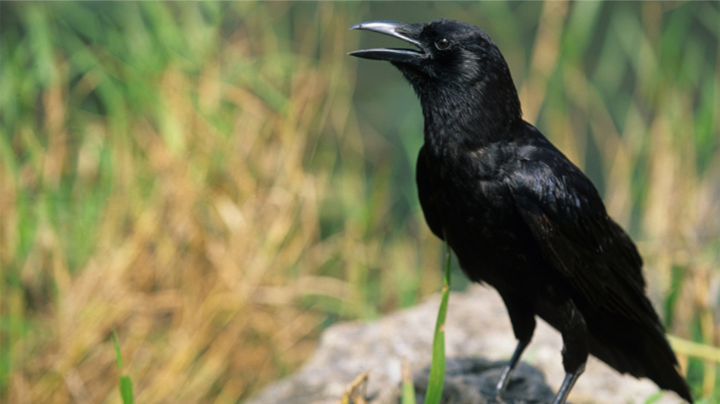Corvus brachyrhynchos

Its distinctive “caw – caw” call, large size, and bold all-black colour, make the American Crow one of North America’s most recognizable birds.
Habitat
Look for crows across most of North America in open areas with trees nearby. Along fields, rivers, lakes, and wetlands, like marshes, are some of the natural areas you can find them. But they are also at home in human-made places like farms, pastures, garbage dumps, parks, golf courses, neighbourhoods, and campgrounds. Fall migration takes them to the southern United States for winter.
You can find American Crows at Oak Hammock Marsh!
Food
Crows will eat almost anything they find, including insects, small mammals, eggs, baby birds, fish, seeds, fruit, carrion, and even pet food and garbage.
Behaviour
American Crows are very social, preferring to be in groups rather than alone. They prefer tall evergreens for nesting and any tall tree for roosting. Family groups stick together, with the parents and young from the past two years raising the next generation. When predators, such as owls, are found, many crows will work together to harass and chase it away, this is known as mobbing.
Conservation
American Crows are of low conservation concern due to their high breeding population, estimated at 28 million. They are, however, susceptible to West Nile Virus, which was introduced to North America in 1999.

